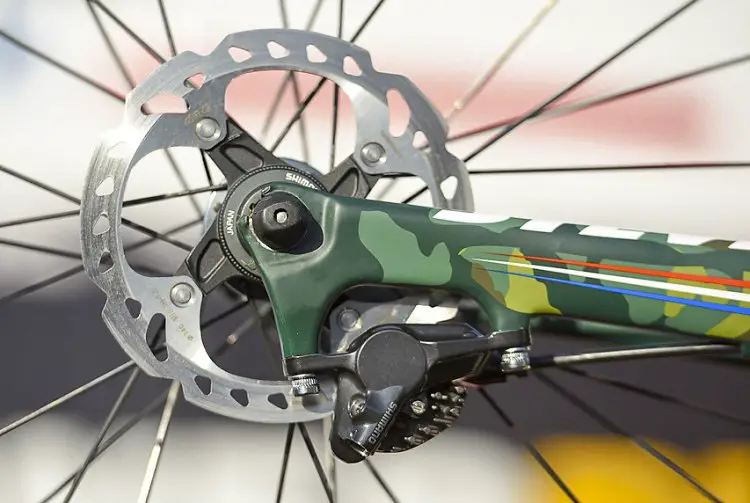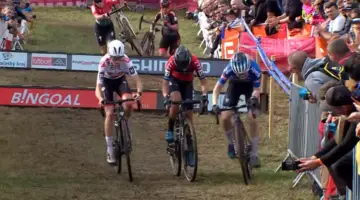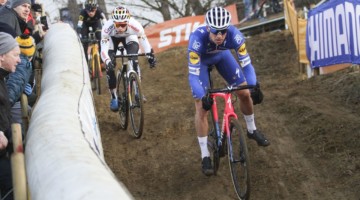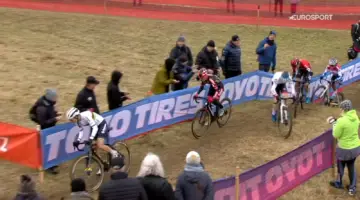Over the last few days, we have been pouring over our pictures that are still coming in from the Cyclocross World Championships in Tabor. One item that struck us was the changing nature of bike tech on podiums in comparison to years past.
We have looked at the technology behind the riders that have what it takes to compete for the podium, and analyzed the top four bikes in each category, from the Junior, U23, Women's Elite, and Men's Elite Races. In the slides below, we'll present some of the most common parts that helped the riders find the podium (or barely miss it), and we'll also point out some of the noticeable outliers.
Although we didn't incorporate the riders who placed out of the top four of each race into our statistics, we'll show you a few unique products that we found. Don't miss our full bike profile on Mathieu van der Poel's Stevens Super Prestige Disc cyclocross bikes of the BKCP Powerplus cyclocross team.
While we included many categories, we opted to save tire selection for a separate post for multiple reasons. In many cases, riders were changing their tire selection mid-ride: Eli Iserbyt and Logan Owen, for example, both reported their mistake of start-line tread selection after their race. As such, a breakdown of tire usage is not only unwieldy, but the reported statistics would be misleading. Stay tuned for our look at some notable tire choices at the 2015 Cyclocross World Championship.




























